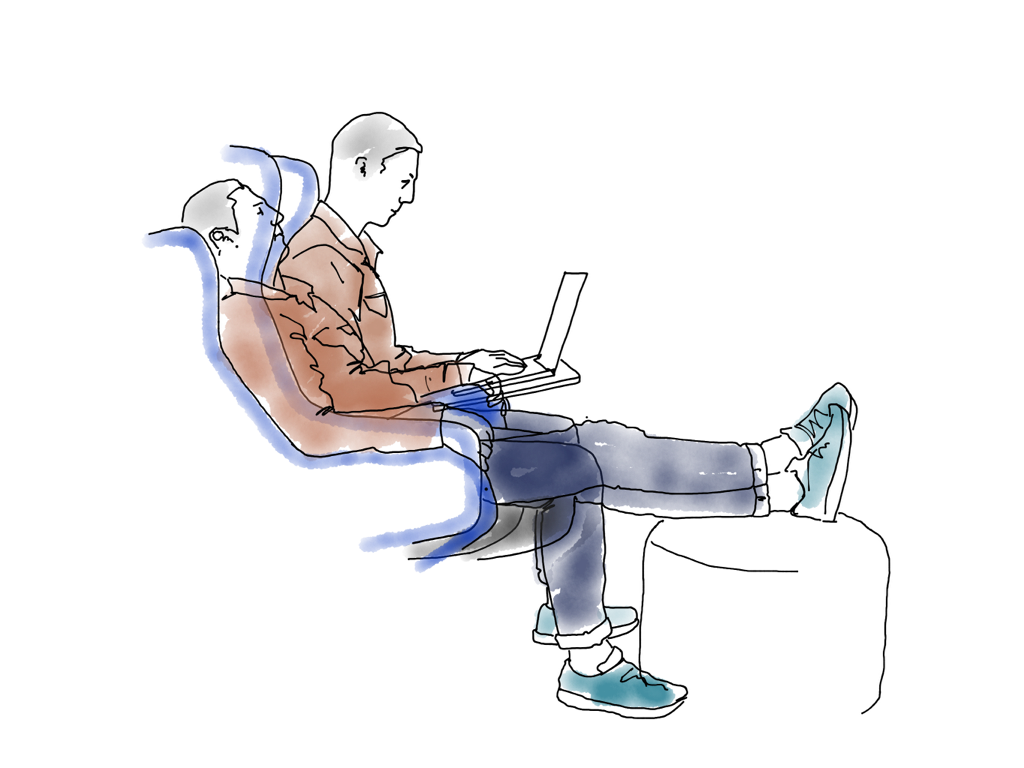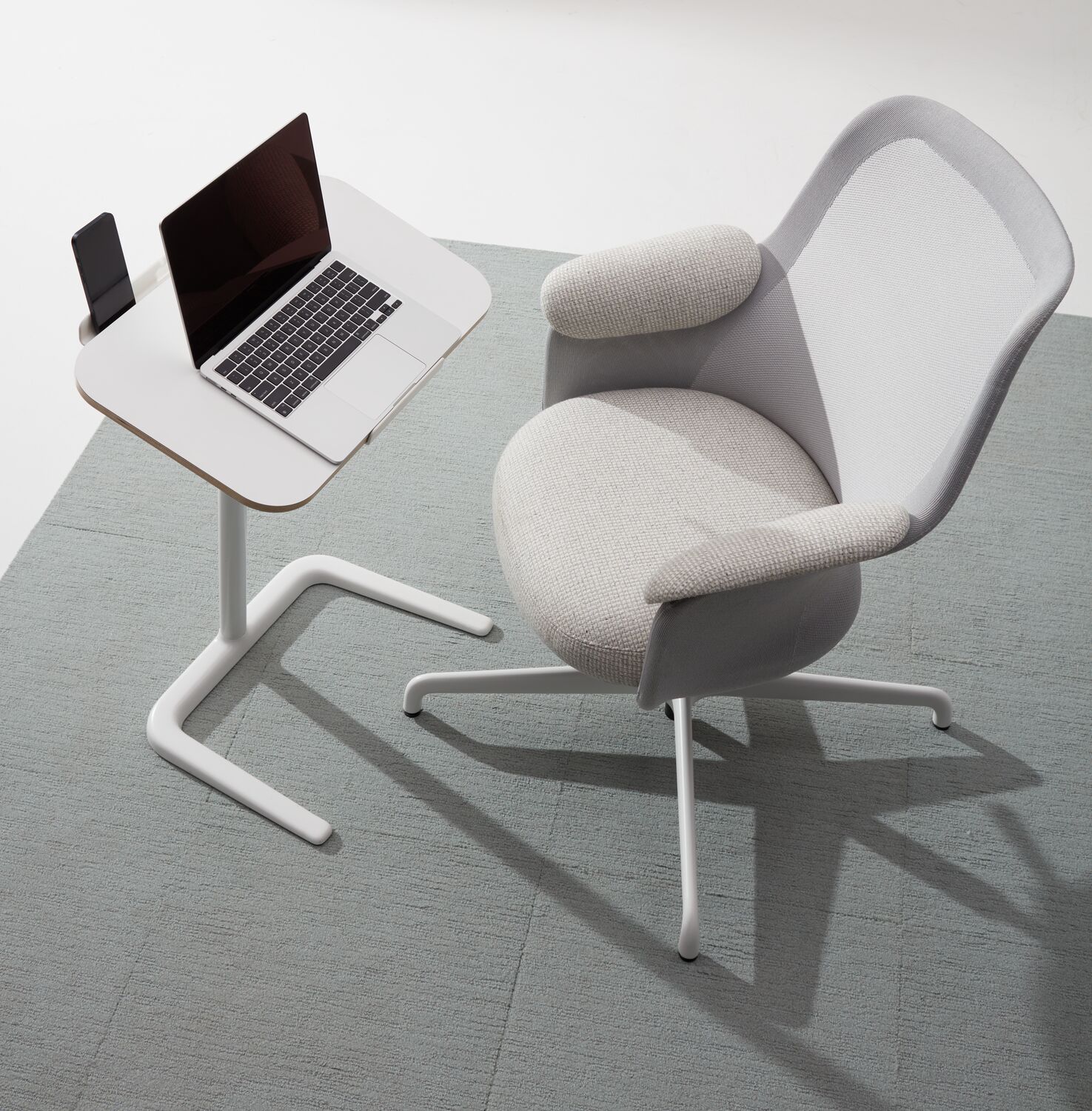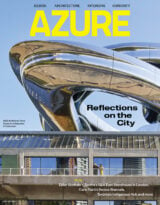
The first major shock to the way we work came with lockdown. Practically overnight, the office disappeared. What followed was a global experiment in remote working that reshaped expectations around where, how and with whom we work. It revealed that many of the old assumptions about productivity, presence and professionalism no longer held.
Since then, the past five years have seen a rapid shift towards hybrid models, decentralized teams and more fluid work patterns. Rather than settling into a new normal, we now face ongoing and unpredictable change. The rise of AI, increased mobility and evolving organizational structures all suggest further disruption is on the horizon. We’re not designing for a fixed future; we’re designing for continuous change.

In this context, the role of the workplace, and the objects that furnish it, is being rethought. At Pearson Lloyd, we believe it’s no longer the designer’s job to prescribe how people work. Our role is to provide the tools that help individuals and teams shape their own environments quickly, intuitively and on their own terms.
There’s a long-standing tradition in furniture design of creating objects within specific typologies: task chairs, meeting tables, soft seating, for example. But the reality of modern work no longer fits neatly into those categories. A single person might move through five different types of activity in a morning, with some focused, some collaborative, some virtual and some personal. These shifts don’t occur in neat, predefined zones drawn into office layouts. They happen organically. If the workspace can’t support that kind of movement, if it can’t be reshaped easily or informally, then it’s working against the people it’s meant to serve.
We need to move from a model of control to one of support. People are naturally adaptable, but too often the systems around them resist change. The job of design is not to impose order on behaviour, but to enable it. That means creating furniture not as fixed solutions but as intuitive tools that adapt to different needs.
This thinking shaped a recent set of tools we developed with Teknion: Aarea chairs, Cosi laptop tables and Shade Screens, each designed to be used alone or in combination, and each capable of supporting different kinds of activity. We conceived every design with flexibility in mind. For instance, the Aarea chair combines the comfort of a lounge chair with the flexibility of a task chair, accommodating a wide range of activities throughout the day. From focused work to meetings, touchdown sessions and private phone calls, the ergonomics support myriad uses within a pared-down design free of bulky mechanical elements. Similarly, the compact laptop tables and screens are both mobile and multi-functional designs, welcoming a range of uses while allowing for easy reconfiguration of the space as needs change.


From posture shifts to spatial transitions, the aim was to create flexible elements that people could rearrange themselves, without specialist input or rigid zoning. We also designed them to integrate seamlessly into any furniture collection, so they could adapt visually as well as functionally.

That doesn’t mean making everything vague or generic. It means designing with agility and humility. Stripping things back to what’s essential and allowing the form to reveal itself. It means building for longevity, not just through durability but through the ability to be repurposed, reconfigured or repaired over time.
Rather than designing a single, unified collection, we focused on developing a set of elements, each with its own logic and purpose that can be used independently or in combination. Some are almost invisible in their simplicity. Others challenge expectations. All of them are designed to give people control over their environment.

To support real, lasting change, we also need to think beyond first use. It’s not enough to design something that looks good in a showroom. The real question is how it performs after decades of reuse. That’s why we focused just as much on serviceability and adaptability as we did on form and comfort. Furniture that earns its place in a flexible workplace must evolve with the people who use it. It should work alongside other systems, not in isolation. And it should be easy to maintain, rather than replaced when something breaks or begins to look tired.
This collaboration with Teknion, whose global reach and rich understanding of workplace culture made it possible to bring these ideas to scale, is just one example of how designers and manufacturers can respond not with fixed answers, but with adaptable tools for an uncertain future.

Ultimately, we’re not trying to define the future of work. We’re trying to create space for it. We don’t know exactly how behaviour will shift in the coming years, but we can build tools that help people meet that uncertainty with confidence, comfort and control. That, we believe, is the real opportunity for design in our rapidly changing world.
Luke Pearson is a co-founder of Pearson Lloyd, a London-based design studio he established with Tom Lloyd in 1997.
Design for (Constant) Change in an Era of Workplace Uncertainty
Luke Pearson reflects on the challenges and opportunities of designing for a fluid, ever-evolving office culture.
